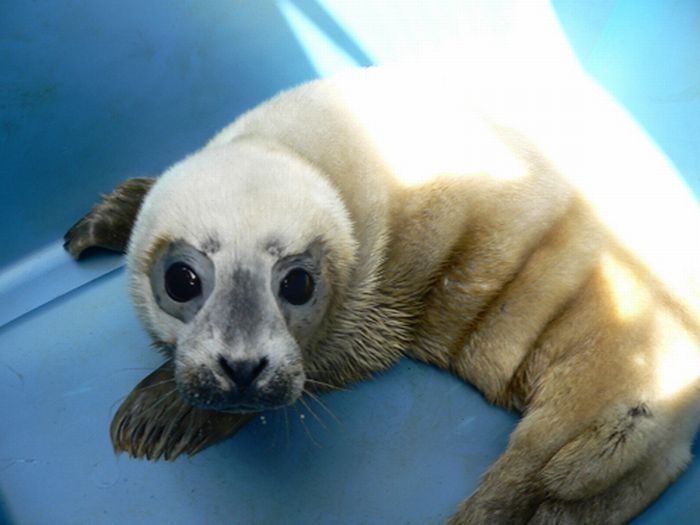|
|
Baby Seal
|
Pinnipeds have unique lungs with airways highly reinforced with cartilage and smooth muscle, and alveoli that completely collapse during deeper dives. While over‐emptying of the lungs in humans classifies as a lung disease and terrestrial mammals are in general unable to empty their lungs, pinnipeds are able to reinflate their lungs even after complete respiratory collapse. Thus, surfactant as an anti-adhesive in the regular collapse and reopening of alveoli may be the primary function of the system in pinnipeds. It is hypothesized that the hydrostatic pressure pinnipeds experience during diving has acted as an external selection force during evolution for adaptations in their pulmonary surfactant system to meet the challenges of extreme hydrostatic pressure and regularly collapsing lungs. It has been argued that a surfactant complex that functions as an antiadhesive needs to be fluid and highly spreadable. When the surfactant systems of different pinnipeds were analyzed and compared to terrestrial mammals, and pinnipeds show changes in surfactant composition and secretion that are likely adaptations for an efficient surfactant system that can deal with the pressures of collapsing lungs.
Surfactant Composition
When compared to terrestrial mammals (cow, sheep, pigs, humans), California sea lions (Zalophus californianus), Northern elephant seals (Mirounga angusturistris), Ringed seals (Phoca hispida), and Harbor seals (Phoca vitulina) had lower levels of the anionic surfactant phospholipids (phosphatidyldlycerol and phosphatidylinositol). Although the role of PG and PI are not clear, they appear to interact with hydrophobic surfactant proteins SP‐B and SP‐C to prevent the irreversible removal of the phospholipids from the surfactant film during alveolar compression and collapse for rapid reinsertion upon reexpansion. There is a also greater percentage of short fatty acid phosphatidylcholine, the primary phospholipid contributor to surfactant function, in pinnipeds than in terrestrial mammal. Since fluidity of the surfactant mixture is also dependent on fatty acid tail length where length leads to increased surfactant fluidity, the change in tail length may indicate a surfactant system adaptation in response to the selection for an effective anti‐adhesive surfactant in collapsed lungs of diving pinnipeds.
|
|









